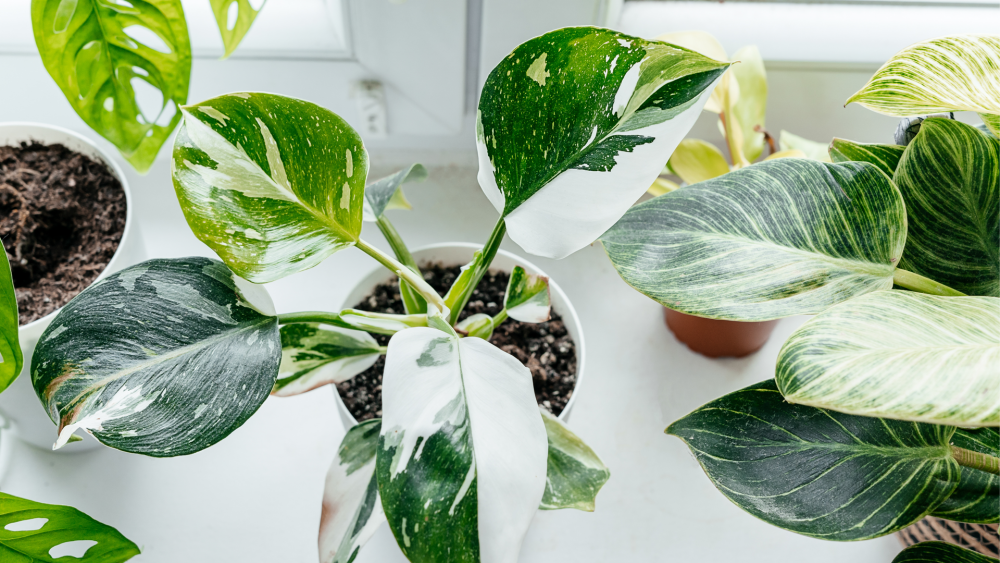
The Philodendron White Princess is a stunning and rare houseplant known for its striking variegated leaves, which feature a beautiful combination of white, cream, and green hues. With its eye-catching foliage and relatively easy care requirements, this plant has become a favorite among plant enthusiasts. However, to ensure your Philodendron White Princess thrives, it’s essential to meet its specific care needs. Here’s everything you need to know about caring for this gorgeous plant.
Philodendron White Princess thrives in bright, indirect light. The variegated leaves need sufficient light to maintain their striking color, and inadequate lighting can cause the plant to lose its white and cream patches, resulting in more green foliage. However, be careful not to place the plant in direct sunlight, as it can scorch the delicate leaves. A spot near an east or west-facing window is ideal, where the plant can receive plenty of filtered light.
If your space lacks natural light, consider supplementing with a grow light to provide the necessary brightness for healthy growth.
Philodendron White Princess prefers moderate watering. The plant’s roots should never sit in water, as this can lead to root rot. Water your plant when the top 1 to 2 inches of soil feel dry to the touch. During its growing season (spring and summer), you may need to water it more frequently, while in the fall and winter, reduce watering as the plant’s growth slows down.
Always ensure the pot has drainage holes, as this will help prevent water from accumulating at the bottom of the pot. When watering, pour water evenly around the base of the plant, allowing the soil to absorb the moisture without becoming soggy.
Philodendron White Princess thrives in warm and humid conditions. It prefers temperatures between 65°F and 80°F (18°C to 27°C), so keep it away from cold drafts, air conditioners, and heaters. This plant also enjoys higher humidity levels, ideally around 60% or more. If the air in your home is dry, especially during the winter months, consider using a humidifier or placing the plant on a humidity tray with water and pebbles.
Regular misting can also help raise the humidity, but avoid wetting the leaves excessively to prevent fungal issues. If your home’s humidity is particularly low, a humidity dome or greenhouse cabinet can provide the ideal environment for your Philodendron White Princess.
Philodendron White Princess prefers well-draining, lightweight soil. A mix designed for tropical plants, such as a combination of peat, perlite, and orchid bark, will provide the right balance of moisture retention and drainage. The soil should remain slightly moist but never waterlogged.
When repotting, choose a pot that is 1 to 2 inches larger in diameter than the current one. Make sure your pot has drainage holes to allow excess water to escape. Repotting every 1-2 years or when the plant becomes root-bound will help maintain healthy growth.
During its growing season (spring and summer), you can fertilize your Philodendron White Princess every 4-6 weeks with a balanced, water-soluble fertilizer diluted to half strength. This will encourage healthy growth and vibrant variegation. Be cautious not to over-fertilize, as this can cause nutrient burn.
In the fall and winter, reduce fertilization, as the plant’s growth slows down. Too much fertilizer during this period can stress the plant, so it’s best to cut back on feeding.
Philodendron White Princess is a relatively low maintenance plant, but occasional pruning can help maintain its shape and encourage bushier growth. If the plant becomes leggy or develops long vines, you can trim it back to promote new growth. Use clean, sharp scissors or pruning shears to cut just above a node (the point where leaves and stems emerge).
To propagate your Philodendron White Princess, take a stem cutting with at least one node and place it in water or moist soil. Once the cutting develops roots, you can transplant it into its own pot.
No, Philodendron White Princess is not pet-safe. Like other Philodendron species, it contains calcium oxalate crystals, which are toxic to pets if ingested. If a pet chews on or swallows any part of the plant, it can cause mouth irritation, drooling, and digestive issues. To keep your furry friends safe, place your Philodendron White Princess in an area that’s out of their reach.